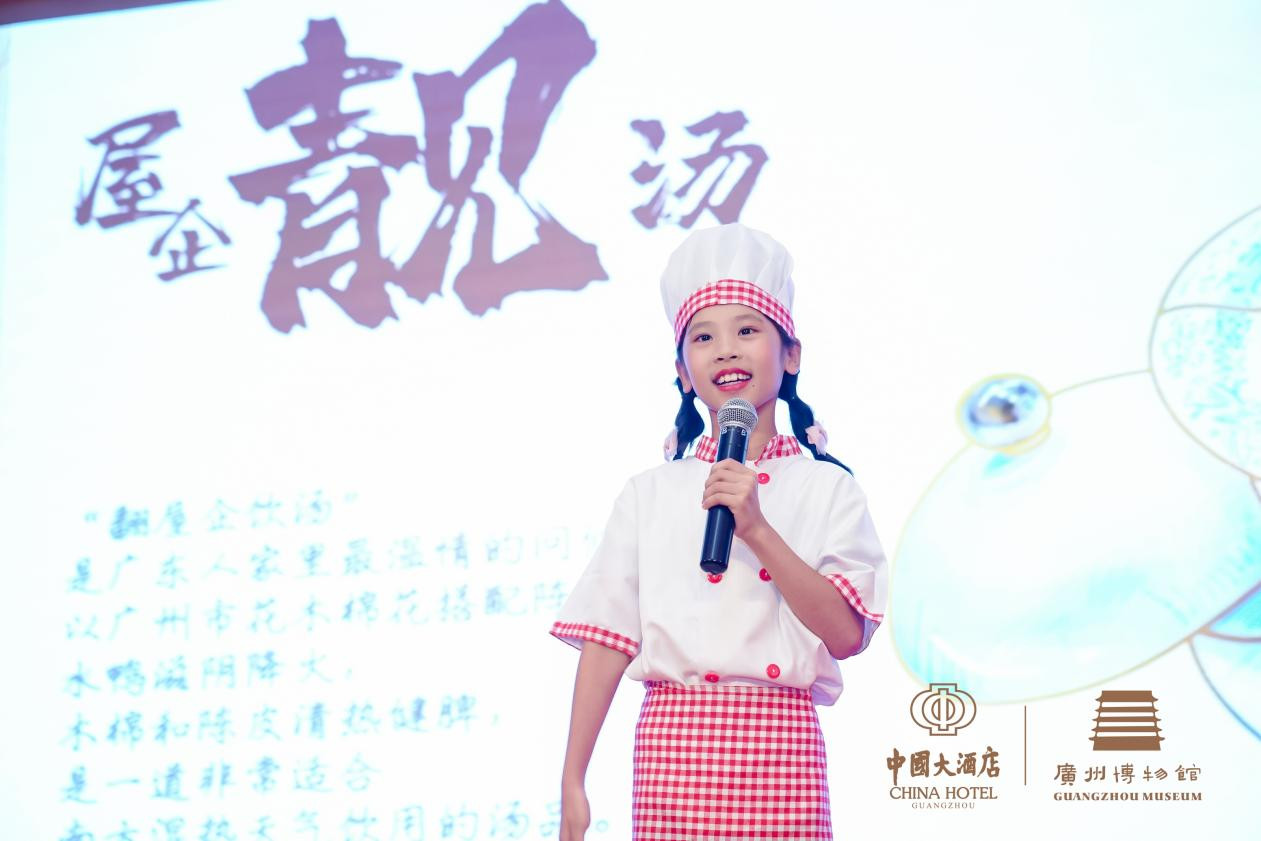On August 8, 2024, the China Hotel hosted a tasting event for the fourth season of "Rediscovery of Iconic Cuisine". The event brought together renowned media, cultural figures, and Cantonese cuisine experts to inspire new imaginations about these culinary wonders.

For the fourth consecutive year, "Rediscovery of Iconic Cuisine," a cultural tourism project co-created by the China Hotel and the Guangzhou Museum, continues to surprise and delight with new offerings. Since its inception in 2020, the project has evolved from restoring old recipes to recreating classic dishes and compiling them into a book. This year, the initiative takes a unique approach by using Cantonese as a cultural bridge to pass down the essence of Cantonese cuisine through children's voices.

Cantonese youth promoting Cantonese cuisine
To expand the influence of the Cantonese language, the Guangzhou Museum and China Hotel jointly organized the Voice of the Bay Area—Cantonese-speaking Children's Storytelling Competition. Contestants were asked to introduce the classic Cantonese dishes and the unique tea-drinking habits of the Guangdong Province in Cantonese. Ten talented kids were shortlisted. During the tasting event, these children took turns introducing each dish of the fourth season of Rediscovery to the guests in Cantonese, passionately reviving Cantonese culinary culture through their youthful voices.

Savoring Cantonese dishes with Cantonese rhythms
Many
recipes from the period of the Republic of China, preserved in the
Guangzhou Museum, are written in Cantonese. Even the simplest
descriptions convey exquisite culinary craftsmanship. If Mandarin is
akin to an elegant lady, Cantonese is more like a lively
girl-next-door, with its rich tones reflecting the vibrancy of
everyday life.
In the fourth season of "Rediscovery
of Iconic Cuisine," each dish's name blends its essence, unique
cooking techniques, and deep cultural significance, vividly
showcasing its charm and flavor through the Cantonese language. For
example, the main dish "Ging sam dung paak," which
phonetically resembles the Cantonese phrase for "heart-stirring,"
is actually a cold dish of crispy golden sea cucumber. The China
Hotel's culinary team innovatively fries the sea cucumber until it's
golden and crispy on the outside, while remaining tender and bouncy
inside. It is garnished with three types of shredded scallions for an
aromatic and layered taste experience.

Another dish, "Baau nei seun dou fei hei," is made with boneless chicken wings stuffed with dried abalone and mushrooms, offering a rich and flavorful experience. The pronunciation of the name makes it a lucky dish, symbolizing prosperity and success, with abalone representing abundance, bamboo shoots representing smoothness, and chicken wings representing success and flight.

The dessert, a sweet lotus seed soup paired with crystal-like red bean cakes and roses, provides a sweet finale. The name “Fa hou yut yun" means flowers in full bloom and the moon at its fullest, symbolizing "perfect happiness and harmony." This conveys a unique Chinese perspective on an ideal life and a deep yearning for happiness.

These iconic dishes are passed down through generations, with their names and each Cantonese phrase used in the recipes preserving their essence and ensuring that the culture behind the cuisine remains intact. Sharing them in Cantonese not only deepens the enjoyment of the food but also broadens the appreciation of Cantonese culture, extending its influence to a wider audience.
Reporter: Nick
Photo: China Hotel and Guangzhou Museum
Editor: Nan, James
















